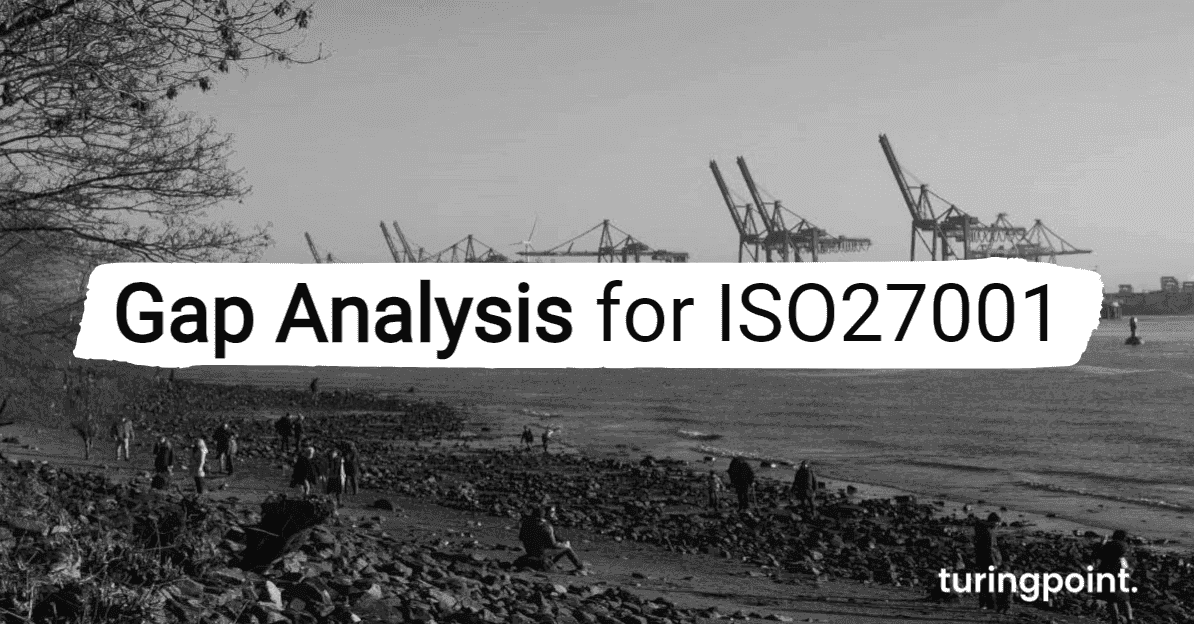Gap Analysis for ISO27001
For customers who are still in the early stages of setting up their ISMS, it is important to assess the current status of information security.

Table of content
It is particularly important for customers who are still in the early stages of setting up their ISMS to assess the current status of the information security. We contribute our extensive expertise in the development, assessment and certification of information security management systems and therefore offer to carry out a gap analysis.
Controls of a GAP Analysis According to ISO 27001
We look at all the controls of ISO 27001:
- A.5.01 Policies for information security
- A.5.02 Information security roles and responsibilities
- A.5.03 Segregation of duties
- A.5.04 Management responsibilities
- A.5.05 Contact with authorities
- A.5.06 Contact with special interest groups
- A.5.07 Threat intelligence
- A.5.08 Information security in project management
- A.5.09 Inventory of information and other associated assets
- A.5.10 Acceptable use of information and other associated assets
- A.5.11 Return of assets
- A.5.12 Classification of information
- A.5.13 Labelling of information
- A.5.14 Information transfer
- A.5.15 Access control
- A.5.16 Identity management
- A.5.17 Authentication information
- A.5.18 Access rights
- A.5.19 Information security in supplier relationships
- A.5.20 Addressing information security within supplier agreements
- A.5.21 Managing information security in the ICT supply chain
- A.5.22 Monitoring, review and change management of supplier services
- A.5.23 Information security for use of cloud services
- A.5.24 Information security incident management planning and preparation
- A.5.25 Assessment and decision on information security events
- A.5.26 Response to information security incidents
- A.5.27 Learning from information security incidents
- A.5.28 Collection of evidence
- A.5.29 Information security during disruption
- A.5.30 ICT readiness for business continuity
- A.5.31 Legal, statutory, regulatory and contractual requirements
- A.5.32 Intellectual property rights
- A.5.33 Protection of records
- A.5.34 Privacy and protection of PII
- A.5.35 Independent review of information security
- A.5.36 Compliance with policies, rules and standards for information security
- A.5.37 Documented operating procedures
- A.6.01 Screening
- A.6.02 Terms and conditions of employment
- A.6.03 Information security awareness, education and training
- A.6.04 Disciplinary process
- A.6.05 Responsibilities after termination or change of employment
- A.6.06 Confidentiality or non-disclosure agreements
- A.6.07 Remote working
- A.6.08 Information security event reporting
- A.7.01 Physical security perimeters
- A.7.02 Physical entry
- A.7.03 Securing offices, rooms and facilities
- A.7.04 Physical security monitoring
- A.7.05 Protecting against physical and environmental threats
- A.7.06 Working in secure areas
- A.7.07 Clear desk and clear screen
- A.7.08 Equipment siting and protection
- A.7.09 Security of assets off-premises
- A.7.10 Storage media
- A.7.11 Supporting utilities
- A.7.12 Cabling security
- A.7.13 Equipment maintenance
- A.7.14 Secure disposal or re-use of equipment
- A.8.01 User endpoint devices
- A.8.02 Privileged access rights
- A.8.03 Information access restriction
- A.8.04 Access to source code
- A.8.05 Secure authentication
- A.8.06 Capacity management
- A.8.07 Protection against malware
- A.8.08 Management of technical vulnerabilities
- A.8.09 Configuration management
- A.8.10 Information deletion
- A.8.11 Data masking
- A.8.12 Data leakage prevention
- A.8.13 Information backup
- A.8.14 Redundancy of information processing facilities
- A.8.15 Logging
- A.8.16 Monitoring activities
- A.8.17 Clock synchronization
- A.8.18 Use of privileged utility programs
- A.8.19 Installation of software on operational systems
- A.8.20 Networks security
- A.8.21 Security of network services
- A.8.22 Segregation of networks
- A.8.23 Web filtering
- A.8.24 Use of cryptography
- A.8.25 Secure development life cycle
- A.8.26 Application security requirements
- A.8.27 Secure system architecture and engineering principles
- A.8.28 Secure coding
- A.8.29 Security testing in development and acceptance
- A.8.30 Outsourced development
- A.8.31 Separation of development, test and production environments
- A.8.32 Change management
- A.8.33 Test information
- A.8.34 Protection of information systems during audit testing
We consult ISO 27002 for recommendations. Many recommendations for various control mechanisms are provided here.
Summary
The gap analysis, also known as an inventory, is an essential part of ISO 27001. It enables companies to identify weaknesses in their security processes and take appropriate measures to rectify these weaknesses.
Organizations should use the results of the gap analysis to improve compliance with the protection objectives of information security - confidentiality, availability and integrity - and ensure that they meet the requirements of ISO 27001. This can be achieved by implementing or optimizing security measures, training employees in security processes and creating or updating security policies and procedures. If you decide to implement an ISMS according to ISO 27001, a GAP analysis should always be carried out first!
Contact
Curious? Convinced? Interested?
Schedule a no-obligation initial consultation with one of our sales representatives. Use the following link to select an appointment:
